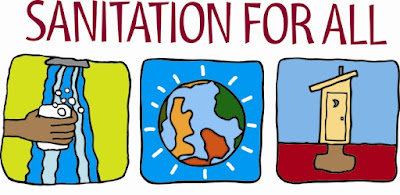Key Facts of Sanitation
Do you know?
- In 2015, 39% of the global population (2.9 billion people) used a safely managed sanitation service – defined as use of a toilet or improved latrine, not shared with other households, with a system in place to ensure that excreta are treated or disposed of safely.
- 27% of the global population (1.9 billion people) used private sanitation facilities connected to sewers from which wastewater was treated.
- 13% of the global population (0.9 billion people) used toilets or latrines where excreta were disposed of in situ.
- 68% of the world’s population (5.0 billion people) used at least a basic sanitation service.
- 2.3 billion people still do not have basic sanitation facilities such as toilets or latrines.
- Of these, 892 million still defecate in the open, for example in street gutters, behind bushes or into open bodies of water.
- At least 10% of the world’s population is thought to consume food irrigated by wastewater.
- Poor sanitation is linked to transmission of diseases such as cholera, diarrhoea, dysentery, hepatitis A, typhoid and polio.
- Inadequate sanitation is estimated to cause 280 000 diarrhoeal deaths annually and is a major factor in several neglected tropical diseases, including intestinal worms, schistosomiasis, and trachoma. Poor sanitation also contributes to malnutrition.

Comments
Post a Comment